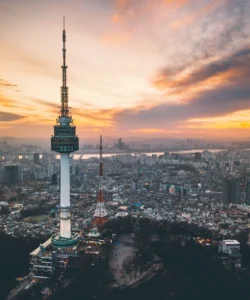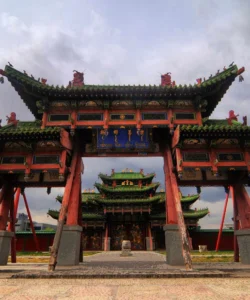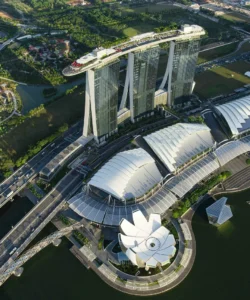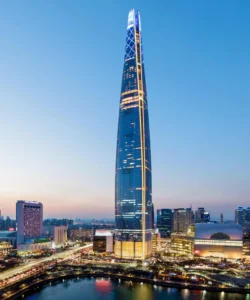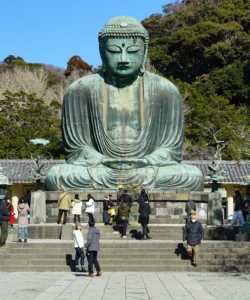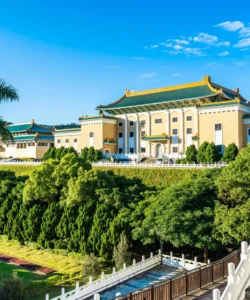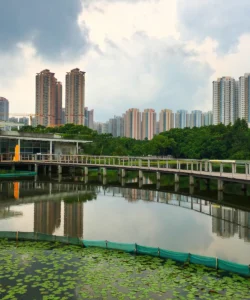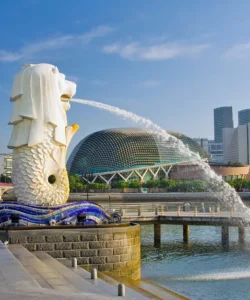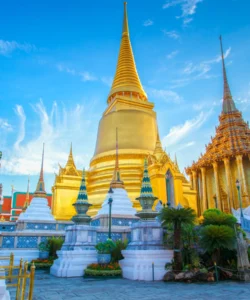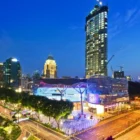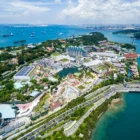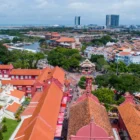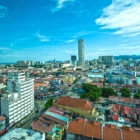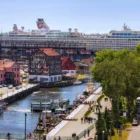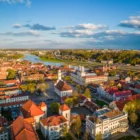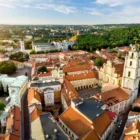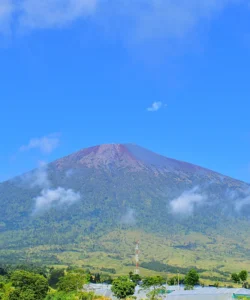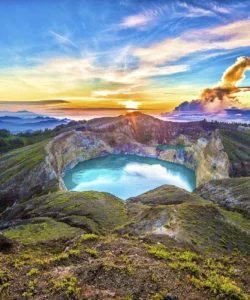The Singapore Zoo, part of the larger Mandai Wildlife Reserve, is an internationally acclaimed zoological park known for its “open concept” exhibits and its commitment to conservation. It offers a truly immersive rainforest experience, allowing visitors to feel a close connection with the animals in naturalistic habitats.
Name: Singapore Zoo (formerly Singapore Zoological Gardens or Mandai Zoo)
Address: 80 Mandai Lake Road, Singapore 729826.
It is located in the heavily forested central catchment area of Singapore, on the margins of the Upper Seletar Reservoir. It’s part of the Mandai Wildlife Reserve, which also includes the Night Safari, River Wonders, and Bird Paradise.
How to Get There:
Singapore Zoo is located a bit further from the city center, but it’s well-served by various transport options:
- By MRT + Bus (Common & Recommended):
- Take the North-South Line (Red Line) to Khatib MRT Station (NS14). From there, take the Mandai Khatib Shuttle Bus directly to the Zoo entrance (a quick and convenient shuttle service).
- Alternatively, from Ang Mo Kio MRT (NS16) or Choa Chu Kang MRT (NS4/JS1/BP1), you can take public bus service 138 or 927 respectively, which go directly to the Zoo.
- From Springleaf MRT (TE4) on the Thomson-East Coast Line, you can also take a bus (e.g., 138C) to the Zoo.
- By Mandai Express: This is a direct shuttle bus service from various pickup points in Singapore, including Suntec City and the Singapore Flyer, offering a convenient ride straight to the Mandai Wildlife Reserve.
- By Taxi/Ride-Sharing (Grab, Gojek, Tada): A direct and fastest option, taking about 25-30 minutes from the city center.
- By Car: Accessible via major expressways like the Seletar Expressway (SLE) and Bukit Timah Expressway (BKE). Ample parking is available at the Mandai Wildlife Reserve car parks.
Landscape and Architecture:
The Singapore Zoo’s landscape and design are renowned for revolutionizing zoo concepts, focusing on naturalistic, “open” exhibits.
- “Open Concept” Design: The most distinctive architectural feature is its “open concept” approach. Instead of traditional cages and bars, animals are housed in large, landscaped enclosures that mimic their natural habitats. Barriers are subtly integrated using natural moats, streams, rock walls, vegetation, and sometimes glass panels, making them almost invisible to the visitor. This creates an immersive experience where it feels like you’re walking through a rainforest alongside the animals.
- Lush Rainforest Setting: The zoo is set within 28 hectares (69 acres) of Singapore’s central catchment area, bordering the Upper Seletar Reservoir. This natural backdrop allows for extensive use of lush, tropical vegetation, tall trees, and natural waterways throughout the park, enhancing the “rainforest zoo” feel.
- Themed Zones: The zoo is divided into various themed zones, each replicating a different animal habitat from around the world. Examples include:
- Fragile Forest: A biodome recreating a tropical rainforest, allowing free-roaming birds, lemurs, and other small creatures to interact with visitors in an immersive environment.
- Wild Africa: A savanna-like exhibit for giraffes, zebras, rhinoceroses, and African painted dogs.
- Primate Kingdom: Featuring various primate species on “islands” surrounded by moats.
- Australasia: Home to kangaroos and wallabies.
- Elephants of Asia: A large, naturalistic exhibit for its herd of Asian elephants.
- RepTopia: An impressive indoor reptile house with innovative displays.
- Pathways and Trams: The zoo features extensive, well-pathed walking trails that wind through the lush exhibits. For those preferring a more relaxed pace, guided tram rides operate around the park, offering commentary and convenient stops at various zones.
- KidzWorld: A large, interactive area designed for younger visitors, featuring a water playground, animal encounters, and a petting zoo.
What Makes It Famous:
- “Open Concept” Pioneer: Singapore Zoo was one of the first zoos in the world, and certainly a pioneer in Asia, to widely adopt the “open concept” or “barless zoo” design when it opened in 1973. This innovative approach to animal display has influenced zoo design globally.
- World-Class Animal Welfare: It’s consistently ranked among the top zoos in the world (often in the top 5 or 10) for its commitment to animal welfare, conservation efforts, and the naturalistic design of its exhibits.
- Free-Ranging Orangutans: The Singapore Zoo is particularly famous for its free-ranging orangutan exhibit, where these arboreal apes swing freely overhead in a large naturalized habitat, often visible to visitors without overt barriers. It also houses one of the largest captive colonies of orangutans globally.
- Conservation and Breeding Programs: The zoo has a strong focus on wildlife conservation and has achieved numerous breakthroughs in captive breeding programs for critically endangered species, including orangutans, white rhinoceroses, and cotton-top tamarins.
- Interactive Animal Encounters: It offers various unique opportunities for close-up animal encounters, including “Breakfast with an Orangutan” (a highly popular paid experience) and animal feeding sessions.
- Ah Meng, the Orangutan: The zoo’s former iconic Sumatran orangutan, Ah Meng, was a global superstar and received the Special Tourism Ambassador Award in 1992, becoming a beloved symbol of the zoo. Her legacy continues.
- Part of Mandai Wildlife Reserve: It’s part of a larger integrated wildlife precinct that includes the world-famous Night Safari, River Wonders (featuring giant pandas), and the new Bird Paradise, allowing for a comprehensive multi-park wildlife experience.
Differences from Some Other Wonders:
- “Open Concept” Zoological Park: While other wonders might feature natural wildlife in parks (Taman Negara, Mlilwane, Hlane), the Singapore Zoo is a man-made zoological park designed specifically to house animals in a way that mimics their natural habitat as closely as possible, without visible cages. This level of naturalistic enclosure design is a hallmark.
- Focus on Global Biodiversity in a Controlled Environment: Unlike natural parks that protect specific regional ecosystems, the Singapore Zoo brings together a diverse array of animal species from around the world within carefully replicated, controlled environments.
- Educational and Conservation Mandate: Its primary purpose is not just entertainment but also education, research, and active conservation of endangered species, often reintroducing animals into the wild. This strong scientific and ethical mandate distinguishes it from purely leisure-focused attractions.
- Integrated with Other Wildlife Parks: The fact that it’s clustered with other unique wildlife parks (Night Safari, River Wonders, Bird Paradise) within the Mandai Wildlife Reserve offers a singular opportunity for an extensive, multi-day animal-themed visit unmatched by many other cities.
- Accessibility and Comfort: Despite its immersive “wild” feel, the zoo is meticulously clean, well-maintained, and designed for visitor comfort, with easy navigation, ample amenities, and a range of facilities for all ages, reflecting Singapore’s reputation for high standards. This contrasts with more rugged, purely wilderness experiences.
Singapore Zoo Photos:































